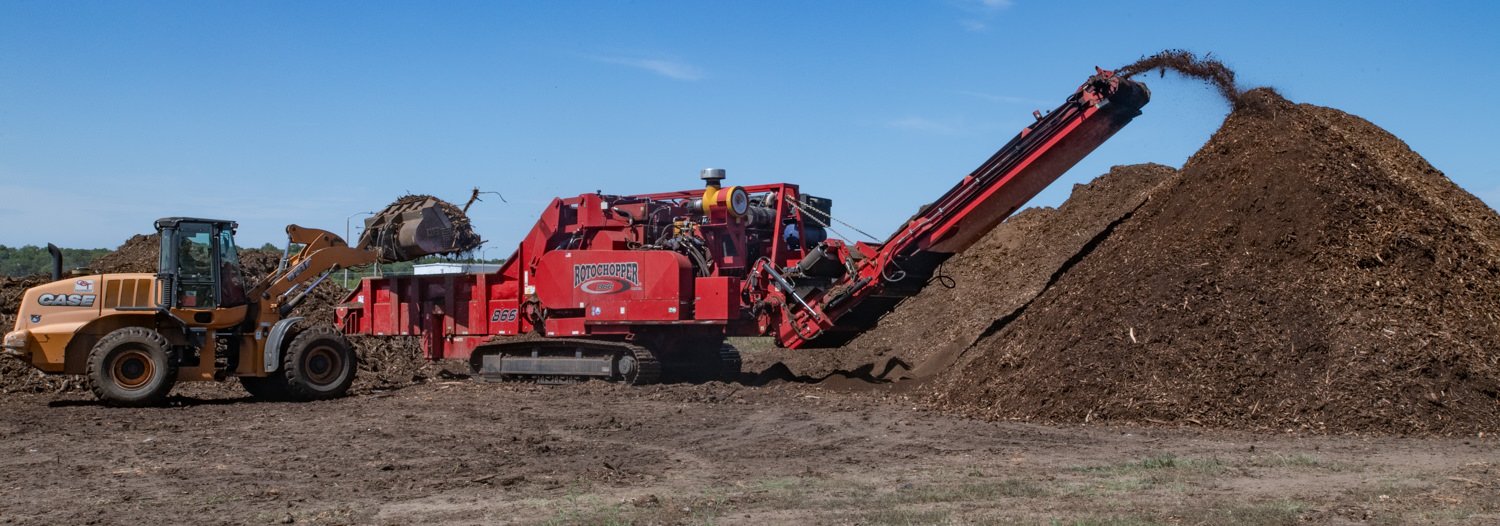
Bob Foos
A wood grinding contractor has left the Center Creek Wastewater Treatment Plant site with mounds of fine wood chips suitable for making compost.
The plant, serving Webb City, Carterville and Oronogo, is drawing attention for its success in creating compost by mixing sludge with wood chips. A video is being made to share how contaminated sludge is being converted for use in restoring land contaminated by mine waste.
Sludge by itself can’t be applied as a soil amendment because it contains too much zinc. Prior to development of the composting process, the sludge was being deposited in a landfill at great expense.
The Missouri Department of Natural Resources and U.S. Fish and Wildlife helped develop the composting process and are seeing the success of the compost being used as soil to cover clay in the Cardinal Valley Habitat restoration area. Native plants are now growing in compost from the plant.
Obtaining enough wood for the project is not a problem. Commercial tree companies helped stack the mountains of wood at the site. But the mountains took up too much space, and commercial tree companies are now prohibited from bringing their large quantities to the plant.
Residents can still dump their cut-down trees and limbs to the “limb yard,” which is located west of the recycling center at 2100 N. Madison Street.

Plant superintendent Josh Farley and operator Joel Stephens begin the composting process by using a large machine to shred the tree stock that comes in.
Shredding, though, doesn’t produce a material fine enough. In late July, Webb City contracted with Smithley Environmental to bring its expensive ($700,000 estimate) grinder to the site and use it for 50 hours at $600 per hour, not to exceed $31,500.
Farley said that contracted amount turned out to be adequate – enough so to provide enough fine material to last up to five years.
Meanwhile, a centrifuge is being used to take the water out of the sludge, resulting in a cake-like substance. It is stored under a covered area west of the lagoons.
Windrows are created to mix the sludge (referred to by Farley as biosolids) with the fine wood material.
After mixing and turning for three weeks, the compost is ready for John Nichols, the habitat manager, to apply it as soil.
Farley says there’s another option which hasn’t been done yet. If the compost were to be stockpiled for a year, he says it could be given away.
At a larger scale, the EPA could arrange to apply the compost created here at other habitat restoration sites.
In the meantime, Farley says shredding wood has come to a halt. The two main reasons he gives are that the shredding machine needs repair and there’s a lack of manpower to continually operate it.
He says he’d rather not, but for now they are burning trees that are brought to the site to provide space for more.
